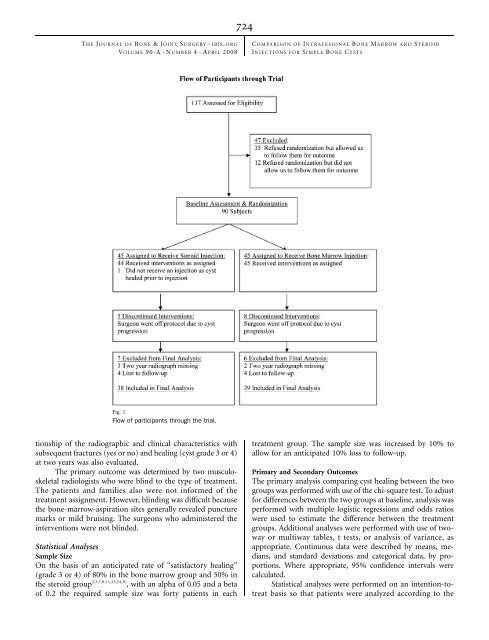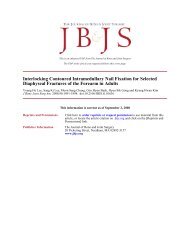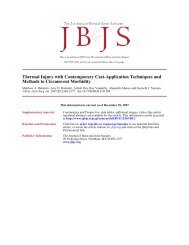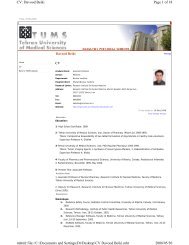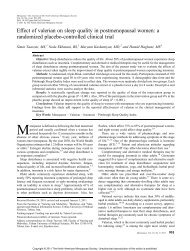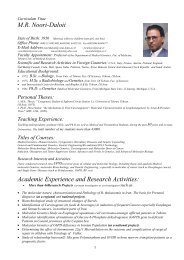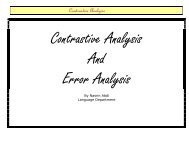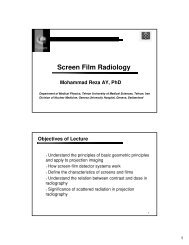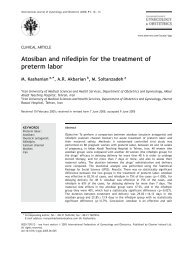A Randomized Clinical Trial Comparing Intralesional Bone Marrow ...
A Randomized Clinical Trial Comparing Intralesional Bone Marrow ...
A Randomized Clinical Trial Comparing Intralesional Bone Marrow ...
Create successful ePaper yourself
Turn your PDF publications into a flip-book with our unique Google optimized e-Paper software.
d T HE J OURNAL OF B ONE &JOINT S URGERY JBJS. ORG<br />
d d VOLUME 90-A N UMBER 4 A PRIL 2008<br />
Fig. 1<br />
Flow of participants through the trial.<br />
tionship of the radiographic and clinical characteristics with<br />
subsequent fractures (yes or no) and healing (cyst grade 3 or 4)<br />
at two years was also evaluated.<br />
The primary outcome was determined by two musculoskeletal<br />
radiologists who were blind to the type of treatment.<br />
The patients and families also were not informed of the<br />
treatment assignment. However, blinding was difficult because<br />
the bone-marrow-aspiration sites generally revealed puncture<br />
marks or mild bruising. The surgeons who administered the<br />
interventions were not blinded.<br />
Statistical Analyses<br />
Sample Size<br />
On the basis of an anticipated rate of ‘‘satisfactory healing’’<br />
(grade 3 or 4) of 80% in the bone marrow group and 50% in<br />
the steroid group 2,3,7,9-11,23,24,30 , with an alpha of 0.05 and a beta<br />
of 0.2 the required sample size was forty patients in each<br />
724<br />
C OMPARISON OF I NTRALESIONAL B ONE M ARROW AND S TEROID<br />
I NJECTIONS FOR S IMPLE B ONE C YSTS<br />
treatment group. The sample size was increased by 10% to<br />
allow for an anticipated 10% loss to follow-up.<br />
Primary and Secondary Outcomes<br />
The primary analysis comparing cyst healing between the two<br />
groups was performed with use of the chi-square test. To adjust<br />
for differences between the two groups at baseline, analysis was<br />
performed with multiple logistic regressions and odds ratios<br />
were used to estimate the difference between the treatment<br />
groups. Additional analyses were performed with use of twoway<br />
or multiway tables, t tests, or analysis of variance, as<br />
appropriate. Continuous data were described by means, medians,<br />
and standard deviations and categorical data, by proportions.<br />
Where appropriate, 95% confidence intervals were<br />
calculated.<br />
Statistical analyses were performed on an intention-totreat<br />
basis so that patients were analyzed according to the


